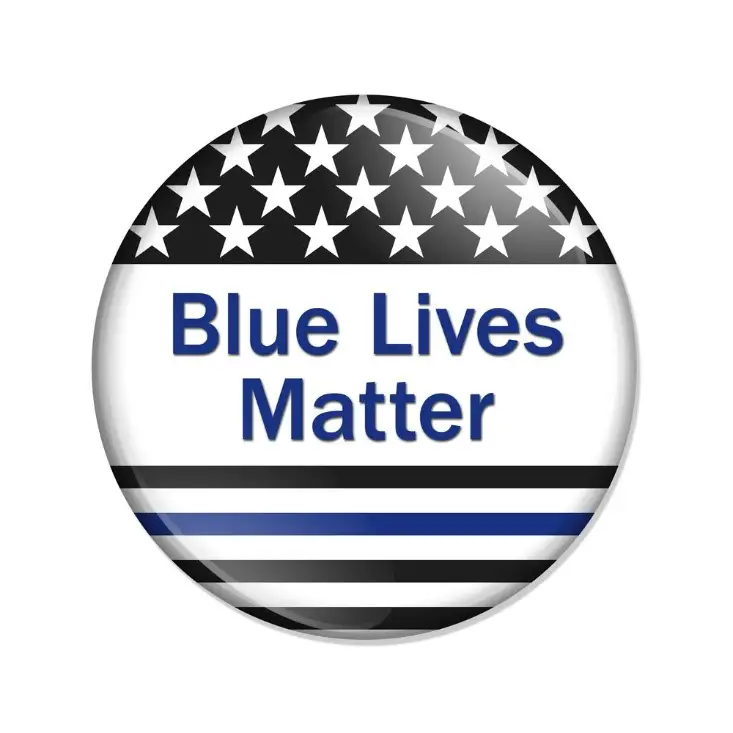Immediately before the 2016 election, people couldn’t have been more politically polarized. Unfortunately, not much has changed since Trump took office. One thing that is high on the Trump Administration’s list are “Blue Lives Matter” laws. The “Black Lives Matter” organization, created to help the plight of African-American citizens being shot by police officers around the nation in high-profile cases, was highly influential in the 2016 campaign. Although the formation of the group was arguably positive for the African-American community, the results were not the same for police officers.
One of Trump’s campaign promises was that he would return America to “law and order,” which included respect and protection for law enforcement officials. Following the Michael Brown case and other sensational Youtube videos, several men in blue were massacred across the US. They were targeted by groups incensed by the “Black Lives Matter” movement. “Blue Lives Matter” is a response to help law enforcement protect themselves from being injured or killed due to mounting disorder and racial divides.
Due to the deaths of many police officers, 14 states have enacted the “Blue Lives Matter” laws allowing law enforcement to impose stiffer and harsher punishments on those who specifically target or harm police officers. It’s not just about shooting or killing law enforcement; other things have been added to the laws to broaden the scope of their reach. In Missouri, for instance, the law includes victims that are off-duty police, and relatives of police officers who are targeted simply due to their association with law enforcement. It also includes those who work in law enforcement agencies.
Proponents of the law insist that it isn’t created to give police officers a license to mistreat people or to excuse any officer who works outside of the law. Rather, its purpose is to give law enforcement protection against those who perpetrate violence against them just because of the line of work they have chosen.
Those who are already wary of the law believe that it is another measure to stamp out citizens’ civil rights and will be used to excuse aggressive tactics that are already well outside the realm of what is fair or legal. Protesters across the state of Missouri believe that it makes it nearly impossible for the public to show concern, to protest, or even to look at law enforcement incorrectly out of fear of retaliation.
The statistics show that in 2016, 143 officers were killed in the line of duty, 21 of whom were targeted specifically for retaliatory reasons. This is the highest number of police deaths recorded in almost two decades, leaving police officers feeling vulnerable as tensions rise. The new use of video and the internet has portrayed the police in a negative light in many communities, putting police officers’ lives in jeopardy when they are trying to help the very people who are protesting their actions.
Almost all states already have legislation in place that allows the enhancement of punishments when it comes to law enforcement. Last year in Louisiana, statutes began to include first responders, firefighters and any medical personnel, making targeted violence against those who work in those fields a hate crime. According to Zirkin and Schmerling Law, although more detailed laws have passed in just a dozen states, many others are considering how well they are protecting their men and women in blue and whether harsher penalties will stop the persecution of police officers across the nation.
Many legal scholars are fearful that the increase of police-violence punishments are a direct reaction to fatal shootings that could pose problems if they aren’t carefully thought through. Making knee-jerk legislation barely ever helps correct a problem; in some instances it makes it worse.
Proponents of the “Black Lives Matter” movement believe that any progress they made over the past two years has been struck down and that the African-American community is once again vulnerable to police brutality. These cases are already difficult to prosecute, and the new “Blue Lives Matter” laws might make it nearly impossible to take on authority and win — even in cases where it can be proven that the police went too far.
A return to law and order was the first order of action on Trump’s list, and it appears that many lawmakers are ripe to help their district’s men and women in blue be less vulnerable to needless violence. What it will do to help relations and tensions in the least-served yet most-needed communities remains to be seen.

